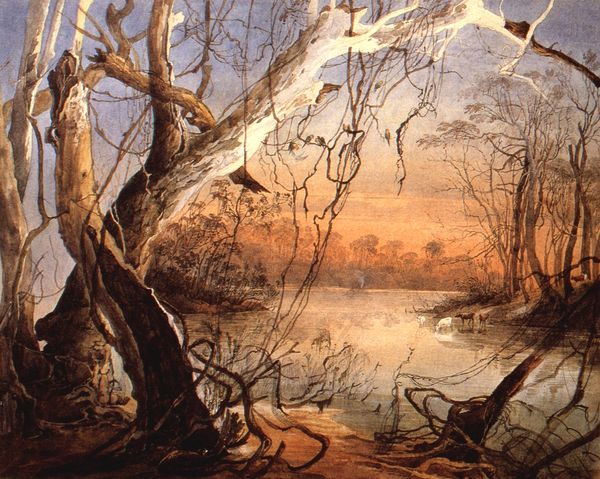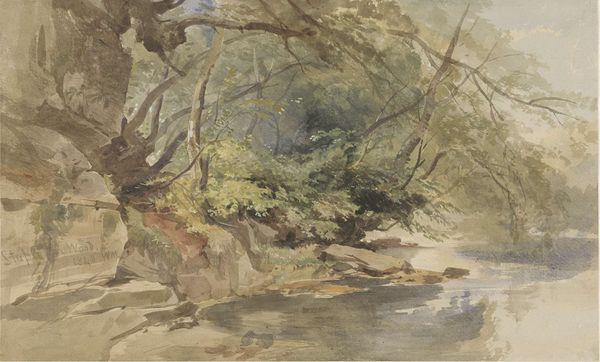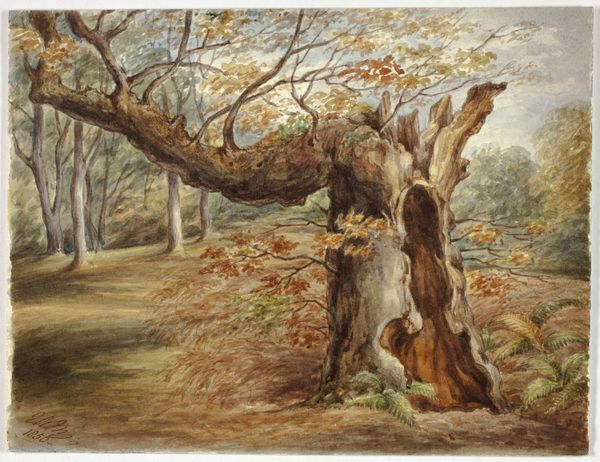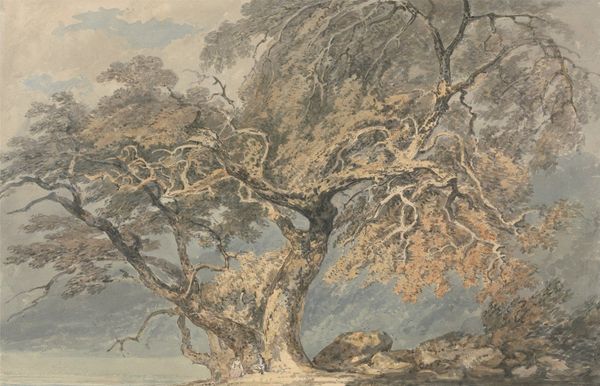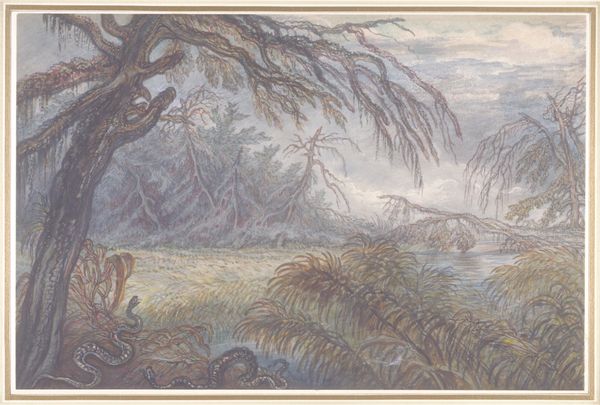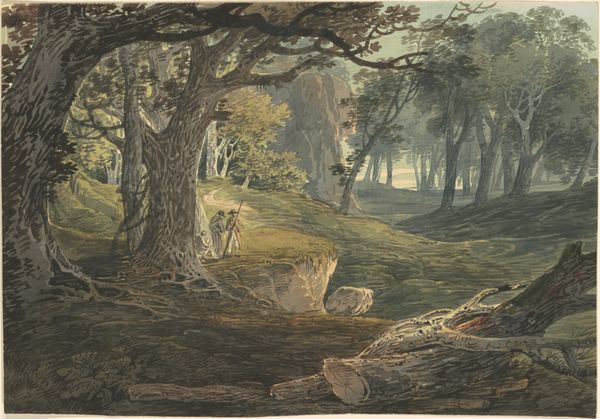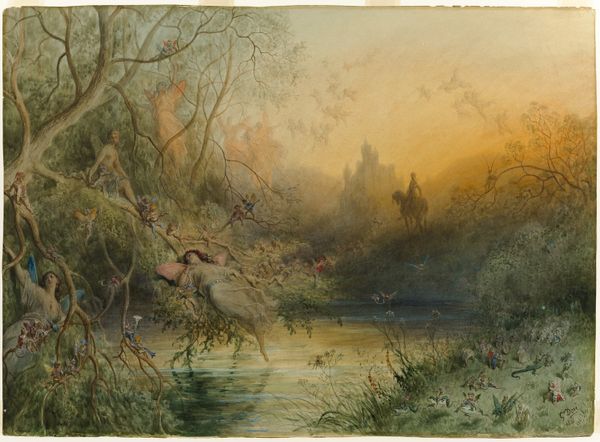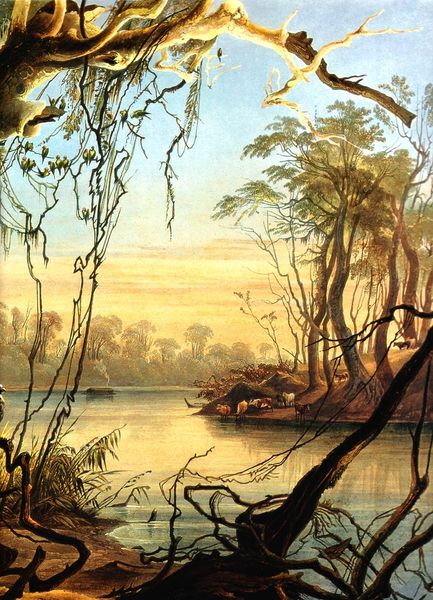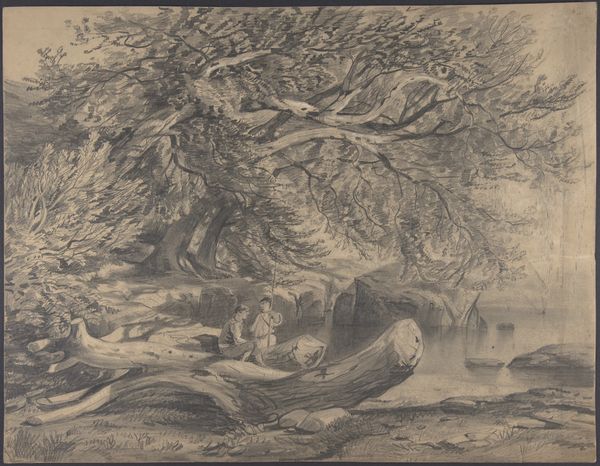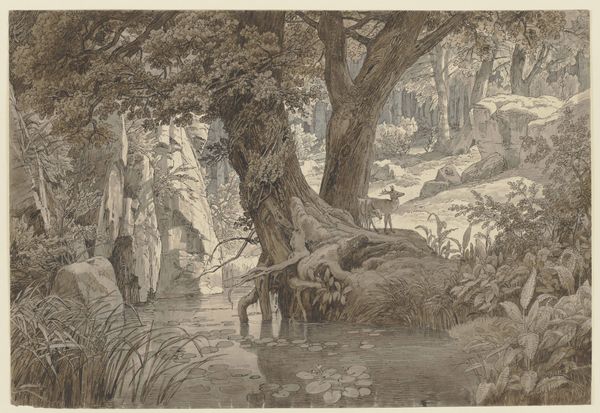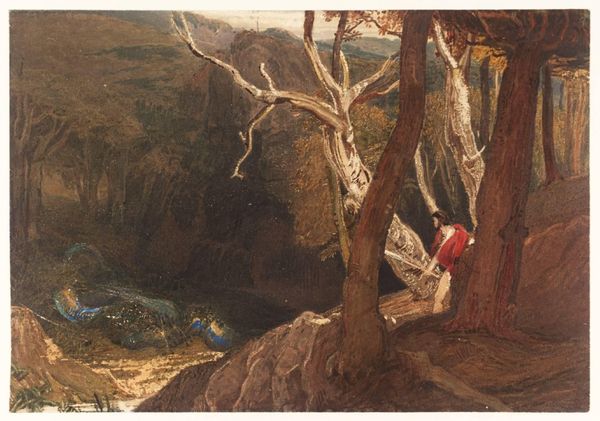
drawing, watercolor
#
drawing
#
landscape
#
watercolor
#
realism
Dimensions: 11 7/8 x 17 5/16 in. (30.16 x 43.97 cm) (sheet)
Copyright: Public Domain
Karl Bodmer created this watercolor titled, *Mouth of the Fox River*, during his travels in the American West in the 1830s. Bodmer, a European artist, was commissioned to document the landscape and Native American cultures, just as the US government was enacting policies of removal and displacement. Bodmer's work, like much of the art from this period, becomes a complex site for understanding the intersection of art, identity, and power. While the scenes might appear to be objective records of the American frontier, they are also infused with the perspectives and agendas of their creators, as well as the historical context in which they were produced and received. Bodmer’s work invites us to reflect on the artist's role as a cultural mediator, and how the visual representations of this era both reflected and shaped societal attitudes towards westward expansion and Indigenous peoples. How can we ensure that historical representation of native cultures is accurate and not romanticized?
Comments
minneapolisinstituteofart about 2 years ago
⋮
In 1832, Swiss artist Karl Bodmer, age 23, found himself in Indiana with time on his hands. The German naturalist Prince Maximilian of Wied-Neuwied had hired Bodmer to record his expedition up the Missouri River, but the prince got sick in New Harmony, Indiana. While he recuperated, Bodmer explored the mouth of the Fox and Wabash rivers. This watercolor captures an almost primeval shoreline overhung with ghostly bark and rapacious roots, along with a romantic vista of wading cattle. Elements of this scene became the basis for an aquatint published in Maximilian’s book Travels in the Interior of North America (1839-43).
Join the conversation
Join millions of artists and users on Artera today and experience the ultimate creative platform.
